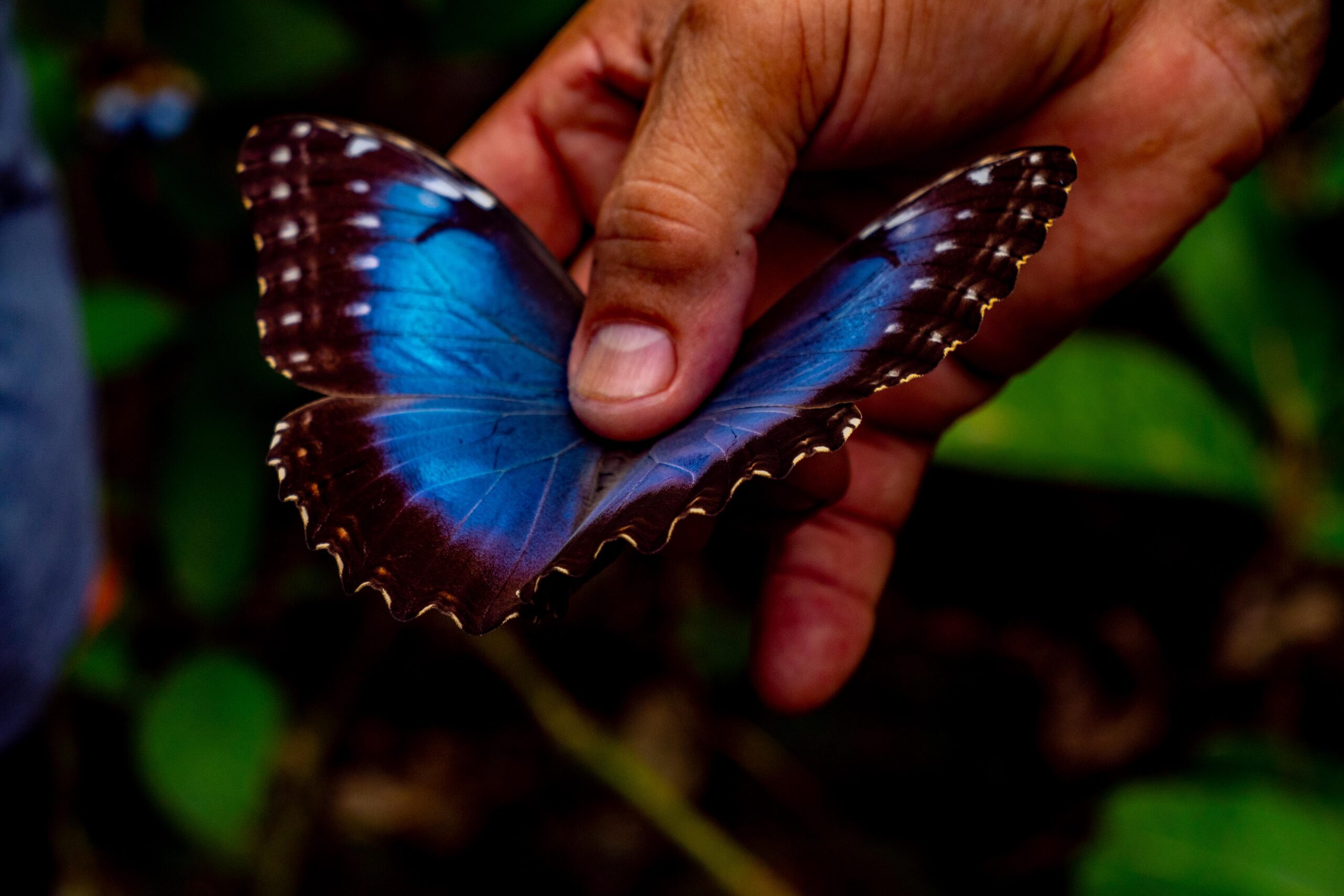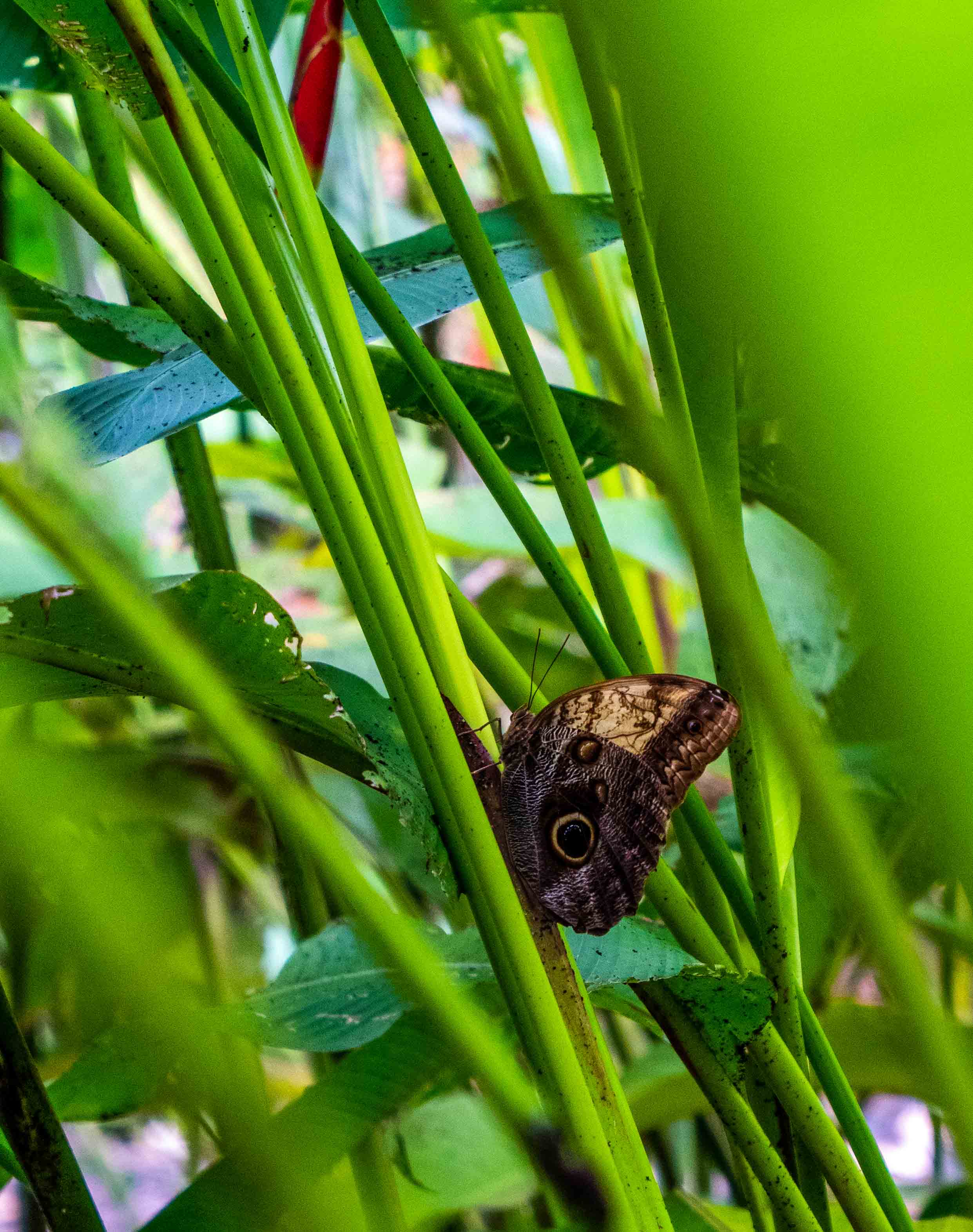
Butterfly Research
Today I visited the Costa Rica Institute of Technology again to learn about their research on the local butterflies. The butterflies are kept in butterfly house where they fly around and drink nectar from flowers. Then the butterflies reproduce, and the eggs are harvested. Once harvested, they are raised to be researched and sold to educators worldwide for research purposes only. Depicted below is a picture of the famous butterfly called a Blue Morpho, also depicted on the currency. Keep in mind the butterfly was not harmed and was handled by a professional. The other butterfly in the second photo is called Pale Owl. These butterflies usually stay stationary to conserve energy due to the amount required to move their massive wings. The butterflies here are researched to see the variations across different species and the possibility of new butterfly species emerging through selective breeding. Until next time, Pura Vida!

